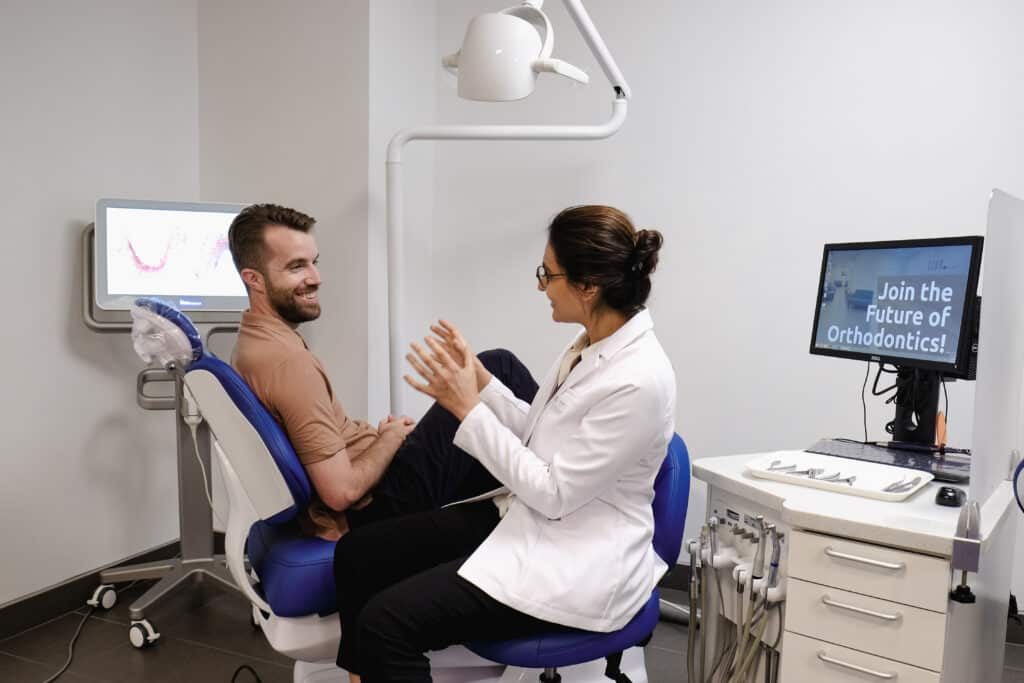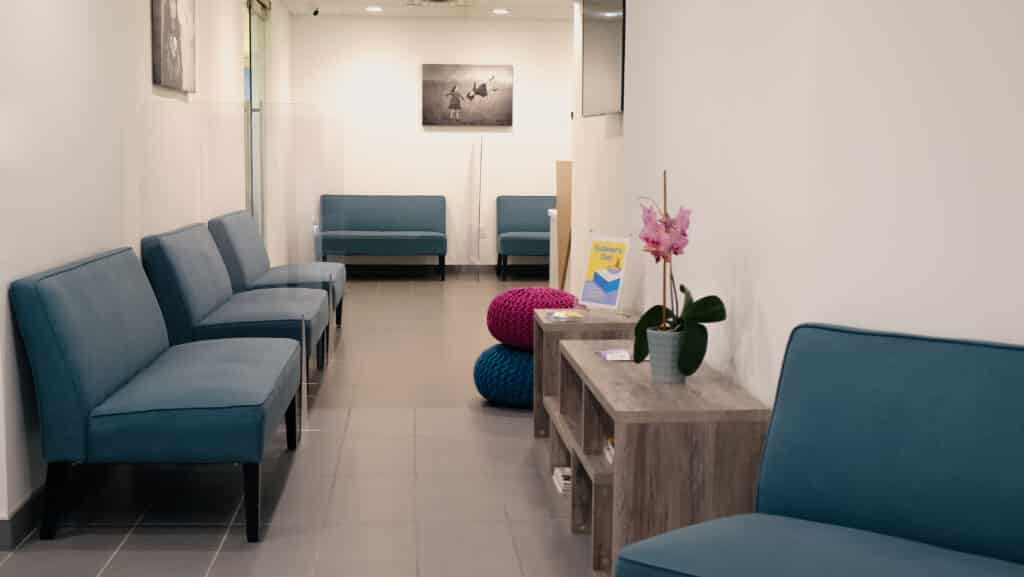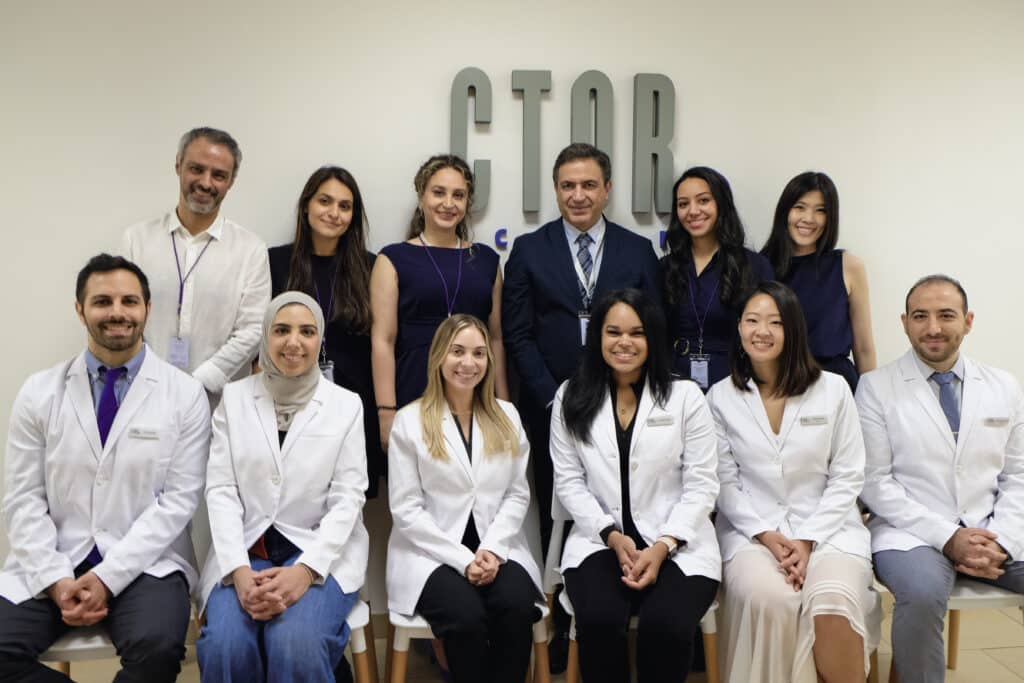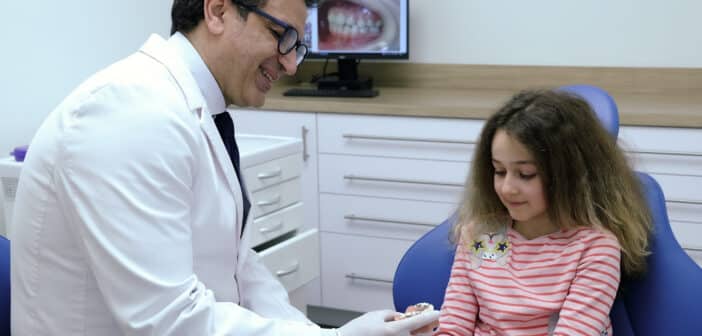This article is sponsored by CTOR Ortho to help all #NJMOMs and their kids have a confident smile.
From the eruption of the first tooth to the exfoliation of the last baby tooth, a child’s smile goes through many stages, but one stage that you may not be able to predict is when or if your child needs orthodontic care. As teeth come in, so do the questions: What age is best for seeing an orthodontist? What type of treatments are there? Should I wait until all the adult teeth come in? The path to orthodontics care is unique to each child. To help you better understand how orthodontics is more than just teenage braces and what you need to know about your child’s teeth development, we consulted with Mani Alikhani, DMD, MS, Ph.D. Professor and Dean at CTOR Academy and faculty at Harvard School of Dental Medicine who sees patients in his office, CTOR Ortho in Hoboken, NJ.

CTOR Ortho is known for its orthodontic research and education.
Let’s begin with what CTOR is and how it relates to CTOR Ortho.
Consortium for Translational Orthodontics Research (CTOR) is a world-renowned center known for cutting-edge orthodontic research and education. Much of the research conducted at CTOR results in patents for new dental technology. CTOR is unique because it’s the only center of its kind in the world developing new approaches and technological advances for treating different types of bite problems and skeletal deformities at all ages. We collaborate with the National Institute of Health, and our facilities have clinicians and scientists working together on studies to bring scientific findings and advances to our patients.
Advanced technology guides all treatment at CTOR Ortho, and our patients benefit from the very latest in orthodontics therapy. Team members routinely attend ongoing education opportunities at CTOR Academy and professional meetings worldwide to stay current on all the advancements in Orthodontics and Dentofacial Orthopedics.
Who do you treat, and when should someone consider seeing an orthodontist?
Generally, patients that come to CTOR Ortho clinics are from three age groups—ages 5-12, 12-18, and adults, and they all want to improve their teeth alignment, but alignment is a small percentage of the problems we see. Mostly, in the younger patients, we see jaw growth deficiencies. Some of the most severe cases are referred to us by the kids’ pediatrician or pediatric dentist. Early Orthodontic Treatment (also called Phase I Treatment) is crucial because it can intercept and prevent the development of severe malocclusions or bite problems. This early intervention can create space for the eruption of permanent teeth, avoiding crowding, the ectopic eruption of teeth (where a permanent tooth can erupt behind or in front of the baby teeth), and impactions (when teeth get encased in bone and never erupt naturally). Orthodontics at an early age can also alter the shape and position of the jaw and correct abnormal growth, preventing future issues with mouth breathing and speech.
Is it better to wait until all the baby teeth are gone?
Suppose we wait until all baby teeth are gone. In that case, we miss the opportunity for orthopedic corrections during growth, which can avoid the need for surgery and reduce the duration of braces, in some cases avoiding braces altogether. If you wait and there is a lack of space, teeth erupt out of alignment on top of each other or end up impacted. At that point, sometimes it is necessary to remove permanent teeth by extraction so the remaining permanent teeth may be aligned with braces. Also, some children may lose baby teeth later, and seeing an orthodontist earlier can correct jaw bone discrepancies by helping to reposition the jaw before growth ends. In the most severe jaw problems, treating early means avoiding the need for surgical intervention later to correct a skeletal problem.

The first consult at CTOR Ortho is free, which gives parents the information to make educated choices for their child’s orthodontic care.
What do you do during the consult?
At CTOR Ortho, our first consult is free. The orthodontist will perform a clinical exam, evaluate the bite, and take a panoramic radiograph that shows the development of teeth in the mouth and inside the jaw. You will have an opportunity to discuss a tentative treatment plan with the doctor, learn about and see examples of the different appliances used for early and teenage treatments, and ask questions about your child’s stage of development and problems.
What are the treatments for younger ages? And older ones?
The appliances for younger ages include palate expanders, which help widen the upper jaw to help match the lower jaw, lip bumpers to make space for lower teeth to erupt, functional appliances such as bionators to help correct an overbite, or upper jaw advancing appliances such as face masks to correct underbites. These approaches are more affordable and less traumatic because you’re not exposing the teeth to many interventions or tools later. At older ages, braces and elastics help guide teeth and jaws into their correct positions. In the case of mild bite problems, we can use aligners to slowly bring teeth into perfect alignment without anyone noticing. Clear aligners require full patient cooperation and are frequently used by teenagers.

CTOR Ortho orthodontists are also researchers and educators.
What makes CTOR Ortho a leader in orthodontic care?
CTOR orthodontists are also researchers and educators dedicated to understanding bone growth and the biology of tooth movement. They are the inventors of the latest tools in Orthodontics and Orthopedics that allow orthodontists around the world to move teeth faster, regenerate deficient jaw bone and correct jaw skeletal problems without needing maxillofacial surgical intervention.
Patients come to CTOR Ortho for treatment from all corners of the US, Canada, and South America. These are cases with difficult bite problems that have consulted several orthodontists and have been told that they should wait for all teeth to erupt, let their bite get bad, and then use surgery of the jaws in combination with braces and tooth extractions to correct their problems. Our goal is to prevent that because as a patient grows, it can be more difficult to treat or to completely correct jaw problems. Even if you’re unsure, it's always good to check with an orthodontist and consider orthodontic care because earlier and preventive treatment is always a better approach for an optimum result.
For more information about CTOR Ortho, visit their website, Instagram, or Facebook page or call (551)900-6200 to schedule a consult.








